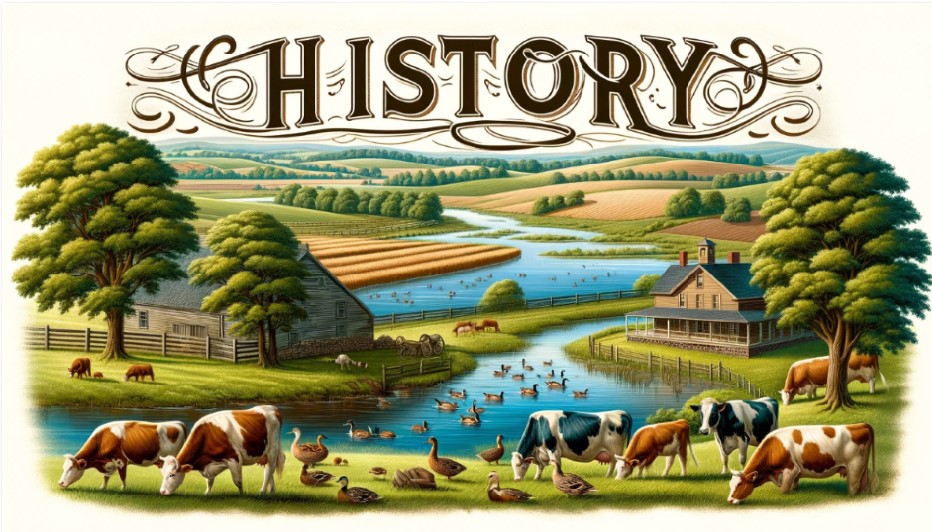TOWN OF FARMINGTON
Jefferson County
History
Early Settlement, Founding and Naming
-
Establishment: Farmington was officially established as a town in 1848, coinciding with Wisconsin's admission to the Union. So you can say it was born with the state in 1848. It seems hard to believe but it was once part of the West Bend Territory. The name "Farmington" was chosen to reflect the agricultural potential of the region. Initial Survey and Land Grants: The first surveys of the area were conducted in the late 1830s and early 1840s, leading to land grants and sales that attracted settlers.
Early Settlers
-
Demographics: The earliest settlers were primarily immigrants from Germany and Scandinavia, along with some from New England and other parts of the eastern United States.
Settlement - Economic Development and Agriculture
-
These settlers established farms, built log cabins, and cleared the land for cultivation. They brought with them agricultural practices from their homelands, which were adapted to the local conditions.
-
Dairy Farming: Dairy farming became a cornerstone of Farmington's economy, with farmers raising cows for milk production. This led to the establishment of creameries and cheese factories in the area. The cheese factories were all but gone by the 1970's.
-
Crop Production: In addition to dairy farming, early settlers grew a variety of crops including wheat, corn, oats, and barley. These crops were essential for both local consumption and trade.
-
Livestock: Besides dairy cows, farmers raised pigs, chickens, and sheep, which provided additional sources of income and sustenance.
-
Abundant lakes, rivers and streams provided a rear-round fishing and attracted deer, turkey and geese to the area. This provide both nutrition and income for the settlers in the worst of times such as droughts or the depression.
Technological Advancements
-
Machinery: The introduction of agricultural machinery in the late 19th and early 20th centuries, such as tractors and harvesters, greatly increased productivity and efficiency on farms.
-
Transportation: Improved transportation infrastructure, including roads and railways, facilitated the movement of goods to and from Farmington, helping local farmers reach broader markets. The Town of Farmington, Concord and Johnson Creek all were on the main throughfare from the 1840's through the 1960's. Horse pulled coaches, then tough motor cars traveled between Milwaukee and Madison and enjoyed the fine restaurants, hotels and saloons that dotted these communities, But in the 1960's the Interstate took that traffic past the Town of Farmington and its growth slowed for the first time.
Community Life, Infrastructure and Institutions
-
Schools: One-room schoolhouses were established throughout the town to educate the children of settlers. Education was highly valued, and these schools served as important community centers. You will even find remnants of a one room schoolhouse along Hwy B as you drive towards Johnson Creek.
-
Churches: Churches were among the first community buildings constructed, reflecting the strong religious faith of the settlers. These churches also served as social and cultural hubs.
-
Businesses: Small businesses, such as general stores, blacksmith shops, taverns, and mills, were established to serve the needs of the farming community.
Social and Cultural Life
-
Community Events: Farmington had a tradition of community events such as fairs, barn dances, and church socials, which helped to foster a sense of community and belonging among residents. Today you'll see the residents at the Ballpark and numerous other gatherings.
-
Organizations: Various social and agricultural organizations, including farmers' cooperatives and women's clubs, played a significant role in the community, promoting cooperation and mutual support.
Preservation Efforts and Historical Societies
-
Formation: Local historical societies have been instrumental in preserving Farmington's history. These organizations collect and maintain historical documents, photographs, and artifacts.
-
Publications: Historical societies and community members have published books and articles documenting the town's history, providing valuable resources for both residents and historians. You can find more information at: Jefferson County, Wisconsin | Wisconsin Historical Society (wisconsinhistory.org)
